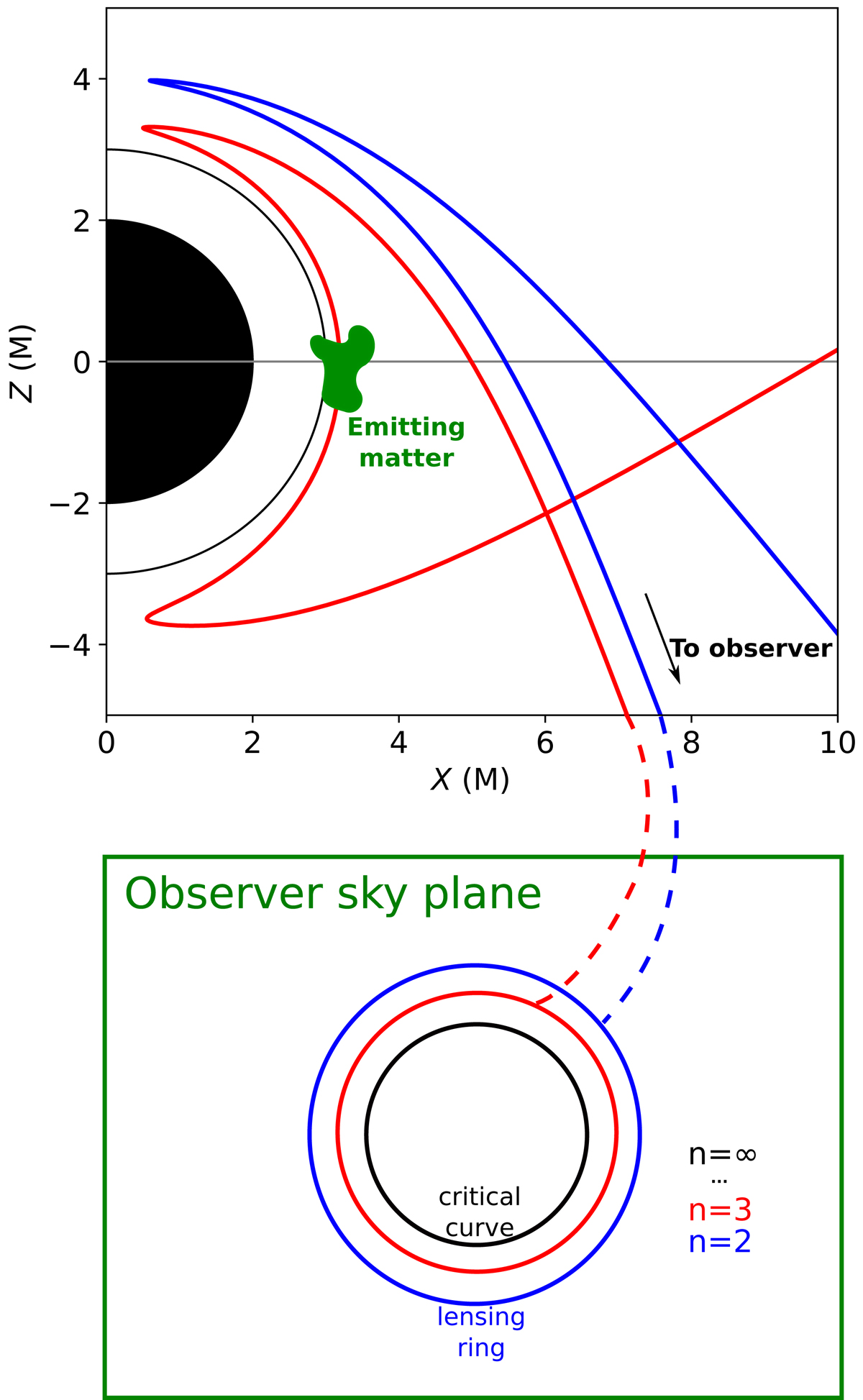Fig. 5.

Example of a secondary ring. Top: two null geodesics, in Schwarzschild spacetime, that are part of the n = 2 (blue) and n = 3 (red) photon subrings (see text), n being the number of crossings of the equatorial plane. The black disk represents the black hole event horizon, and the thin black circle shows the location of the unstable spherical photon orbit. Bottom: the plane of the sky of the distant observer. The various concentric rings depict the photon subrings (see text) corresponding to the different values of the number n of crossings of the equatorial plane of the black hole. The lensing ring and critical curve (see text) are explicitly labeled. If only one blob of emitting matter (in green in the top panel) is present close to the black hole and interesects the red geodesic only, and not the blue geodesic, then only the n = 3 subring will be illuminated on sky, and the others will remain dark. The secondary ring will then coincide with the n = 3 subring. This would not be so should the blob of emitting matter be situated elsewhere. The spacing between the subrings on the observer’s sky is of course very exaggerated and lies within ≲1 μas for M87*.
Current usage metrics show cumulative count of Article Views (full-text article views including HTML views, PDF and ePub downloads, according to the available data) and Abstracts Views on Vision4Press platform.
Data correspond to usage on the plateform after 2015. The current usage metrics is available 48-96 hours after online publication and is updated daily on week days.
Initial download of the metrics may take a while.


